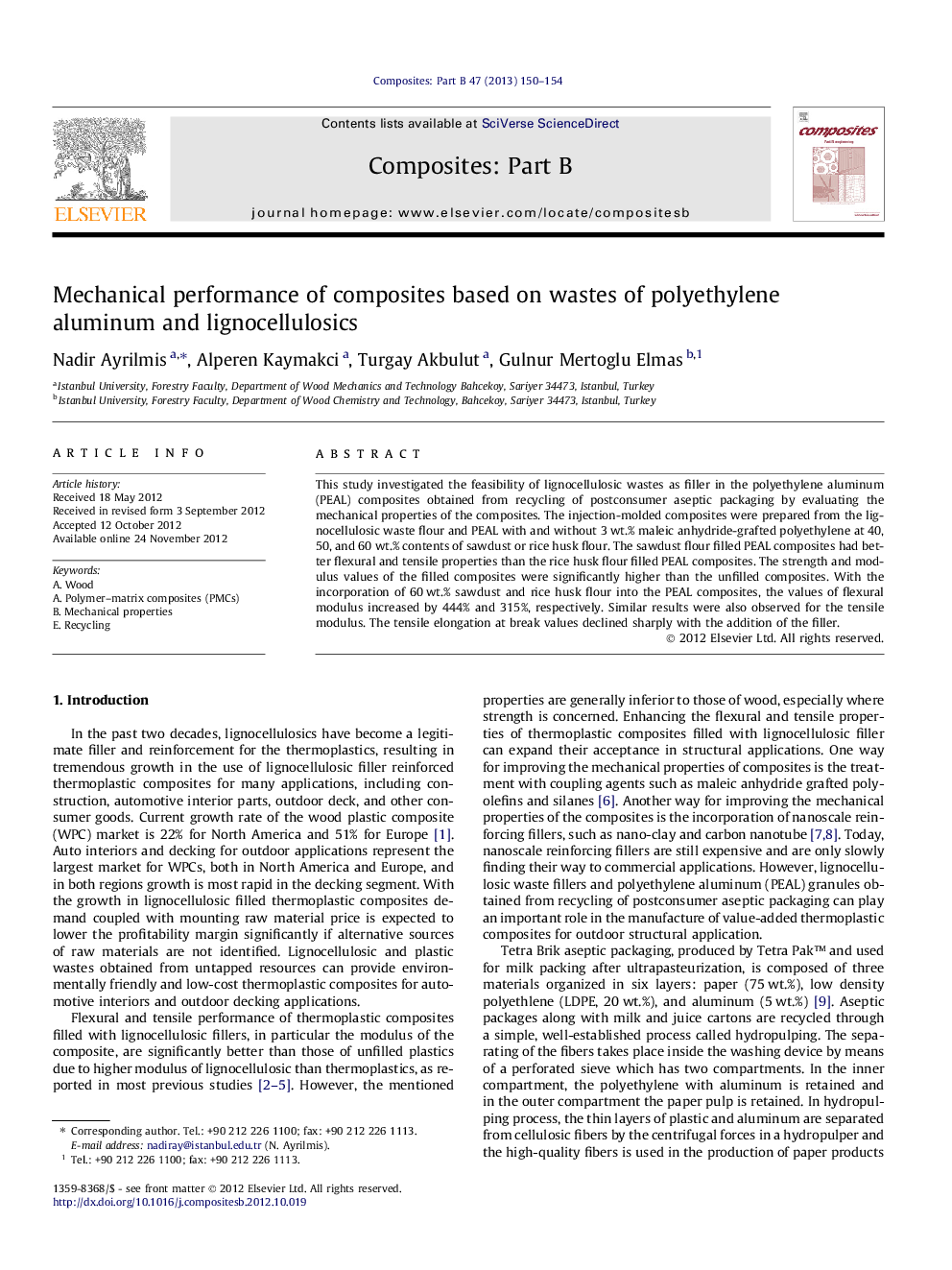| Article ID | Journal | Published Year | Pages | File Type |
|---|---|---|---|---|
| 818334 | Composites Part B: Engineering | 2013 | 5 Pages |
Abstract
This study investigated the feasibility of lignocellulosic wastes as filler in the polyethylene aluminum (PEAL) composites obtained from recycling of postconsumer aseptic packaging by evaluating the mechanical properties of the composites. The injection-molded composites were prepared from the lignocellulosic waste flour and PEAL with and without 3Â wt.% maleic anhydride-grafted polyethylene at 40, 50, and 60Â wt.% contents of sawdust or rice husk flour. The sawdust flour filled PEAL composites had better flexural and tensile properties than the rice husk flour filled PEAL composites. The strength and modulus values of the filled composites were significantly higher than the unfilled composites. With the incorporation of 60Â wt.% sawdust and rice husk flour into the PEAL composites, the values of flexural modulus increased by 444% and 315%, respectively. Similar results were also observed for the tensile modulus. The tensile elongation at break values declined sharply with the addition of the filler.
Related Topics
Physical Sciences and Engineering
Engineering
Engineering (General)
Authors
Nadir Ayrilmis, Alperen Kaymakci, Turgay Akbulut, Gulnur Mertoglu Elmas,
